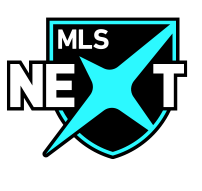
Everything You Need to Know About MLS Next & North America’s Youth Soccer System Today
By GoldCleats Global Inc.
Major League Soccer has really improved in quality over the last couple of years. There are quality players coming out of the league that are going on to represent the best clubs in the world. It is not the same league as it was a decade or so ago when it was merely thought of as a “retirement league” by the rest of the soccer loving world. Players like Weston McKennie, Giovanni Reyna, and Christian Pulisic have proven that young American players have the potential to make a name for themselves in Europe and play for any team that they set their mind to showing that the ability of MLS to produce new and exciting talent is increasing.
Gone are the days when MLS was only associated with and known for players at the end of their careers, however we cannot ignore the fact that players like David Beckham, Wayne Rooney, Thiery Henry have helped to put MLS on the map but the only way that is can be seen as a serious talent producing league is by investing in youth. There has been a shift in the focus for almost all of the major MLS teams with the influx of youth. Cristian Pavón, Diego Rossi at LAFC, Lucas Rodriguez and Luciano Acosta at D.C. United are some of the best players in the league and they
are playing alongside exciting homegrown talent. Alphonso Davies and Tyler Adams as of late moved for record cash, while 19-year-old Paxton Pomykal has secured probably the most brilliant midfielder in the league. Suddenly, there is youthful, prospering quality undulated all through the league. We even has a 13 year old debut as the youngest player ever.
All the countries that have won the World Cup had two things in common.
- They all have very well-established domestic and youth leagues.
- Their domestic leagues constantly provide world class talent for their national
teams.
Taking the example of Netherlands, they seriously invested in their youth and the development of talent at different age groups to produce players that would go on to become global superstars. Ajax, PSV constantly produce talent that through their academies and youth leagues are able to make it to the next level among other clubs known to produce talent.
The MLS’s Homegrown initiative that was started way back in 2008 provided the first steps for actually crafting elite players instead of just finding and honing guys who came through college soccer. College soccer will always remain important in North America but over reliance on it will not make the US or Canada serious challengers for the World Cup any time soon. To progress further into the later stages of major international competitions you need a high-functioning, dedicated academy system. Period. And with MLS NEXT and the to-come MLS reserve leagues, starting in 2022, these efforts will be turbocharged. Improving the training facilities across the league, a robust system is starting to appear in different markets around the US and Canada to continually develop players with first-team potential. The flow from grassroots all the way through to the first team systems for the first time in history has been formally blueprinted, produced, and is now expanding via the MLS Next.
MLS Next is the successor to the U.S. Soccer Development Academy. It was created by the collaboration of top elite youth academies around the country, and ushers in the future of soccer in North America.
MLS NEXT was unveiled exclusively to the elite youth player group, as well as young players aspiring to achieve a spot on one of the platform’s 113 clubs. MLS NEXT has a total of 489 teams competing in the U13, U14, U15, U16, U17, and U19 ages.
MLS Next promises to take the youth expansion to the next level. With multi-million-dollar extension expenses for new expert soccer clubs taking part in MLS’ extension, and these clubs being compensated when any MLS Academy player signs with a European club … there ought to be reserves accessible to reinvest in player development.
MLS NEXT’s debut season was a mixed bag. The number of matches played by some teams was 13 and some only played 2. There were bound to be some issues in the debut season as this is a new league with so many clubs participating. But it provided enough of a foundation for the inaugural MLS NEXT Cup playoffs to take place in Dallas Texas in July, crowning champions in four age groups.
Following are the winners of the different age groups that were crowned back in July of this year.
Under 15:
Champions: Real Salt Lake Academy
The Real Salt Lake Academy won after beating Philadelphia Union Academy 2-0.
U15 Individual Awards:
- Golden Boot: Axel Kei (Real Salt Lake)
- Best Goalkeeper: Andrew Rick (Philadelphia Union)
- Golden Ball: Cruz Medina (San Jose Earthquakes)
Under 16:
Champions: Weston FC
Weston FC lifted the trophy after humbling Tampa Bay United in a 5 goal thriller with the final score line of 3-2.
U16 Individual Awards:
- Golden Boot: Chase Vazquez (Weston FC) and Luke Van Heukelum (Sockers FC)
- Best Goalkeeper: Phillip Falcon (Tampa Bay United)
- Golden Ball: Benjamin Cremaschi (Weston FC)
Under 17:
Champions: Orlando City SC Academy
Orlando City SC Academy beat Players Development Academy (PDA) in a penalty shootout.
U17 Individual Awards:
- Golden Boot: Tarik Scott (FC Dallas)
- Best Goalkeeper: Rafael Ponce de Leon (PDA)
- Golden Ball: Christopher Olney Jr. (PDA)
Under 19:
Champions: Chicago Fire FC Academy
Chicago Fire SC defeated Solar SC 1-0
U19 Individual Awards:
- Golden Boot: Missael Rodriguez (Chicago Fire SC)
- Best Goalkeeper: Martin Dominguez (Solar SC)
- Golden Ball: Sergio Oregel Jr. (Chicago Fire SC)
MLS Next debut season was anything short of a bumpy ride but it will surely improve in the new campaign.
Following are the areas to watch as MLS Next new season kicks off.
- Covid-19 had a huge impact on soccer all over the world it was a difficult job to even go ahead with the first installment. Now, with season two getting underway this autumn, MLS NEXT’s leaders aim to move from triage mode into something more advanced. A big crop of new members has joined the league, running the total to 133 clubs across Canada and the United States, competing across six age groups. All told, it comprises 590 teams and more than 12,000 players taking part in a 10-month pro-style season. So, we will no doubt see a better organized tournament as we return to normalcy.
- The reason for the expansion of the MLS Next participation is to attract as much talent as it can across US and Canada. This will improve talent identification. But this is also causing a problem by increasing traveling costs so the next step is to divide the competition into eight regional divisions, with heavily localized scheduling in the younger (Under-13 and U-14) age groups and opportunities for MLS academies to face off against one another in addition to nearby youth clubs, as well a calendar that allows for proper rest, recovery and training-to-game ratio.
- Improvement in the pathway to top European Leagues. Raising awareness for players and showing that by playing in the league they can make it not only to an MLS first team but also go to top clubs in Europe.
MLS Next is a step in the right direction for the soccer scene in North America. It will create opportunities for players to showcase their talent which will increase their chance to be scouted by teams all over the world. A properly organized league at different age groups grooms the players to be able to adjust quickly to the level of competition in Europe if any of the players follows the pathway to Europe because in Europe there are well established youth league at all levels. There are some adjustments to be made but there is no doubt this will only be beneficial in the long run for the sport as a whole for the continent.


